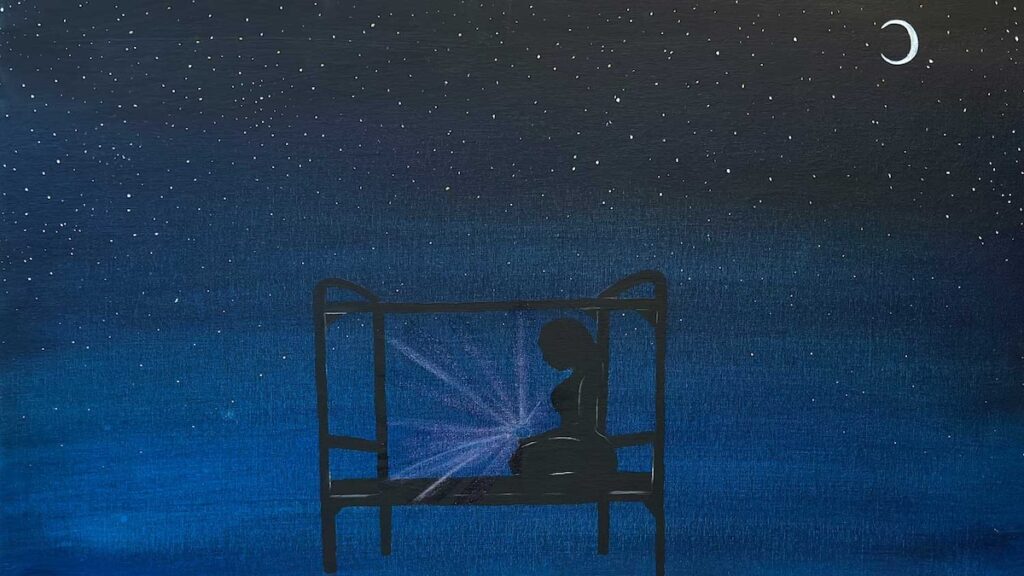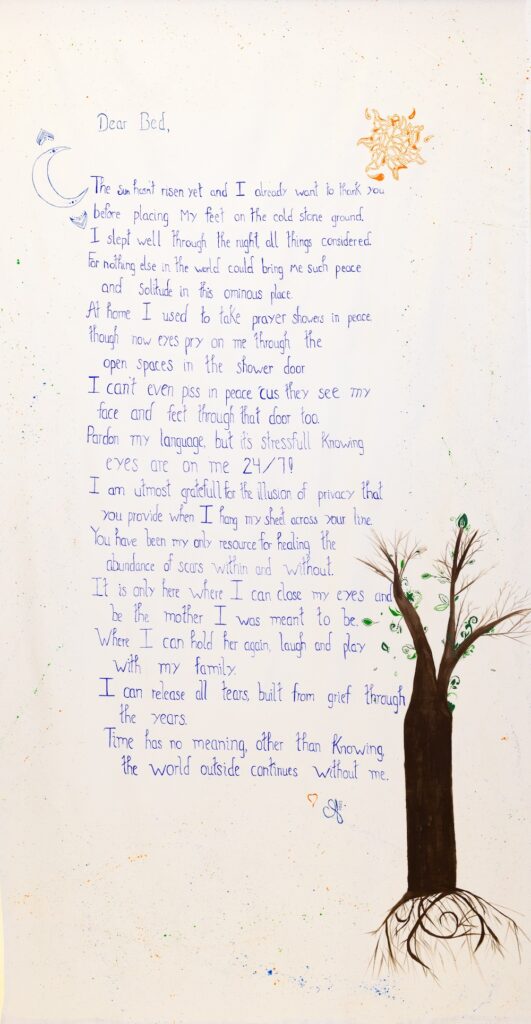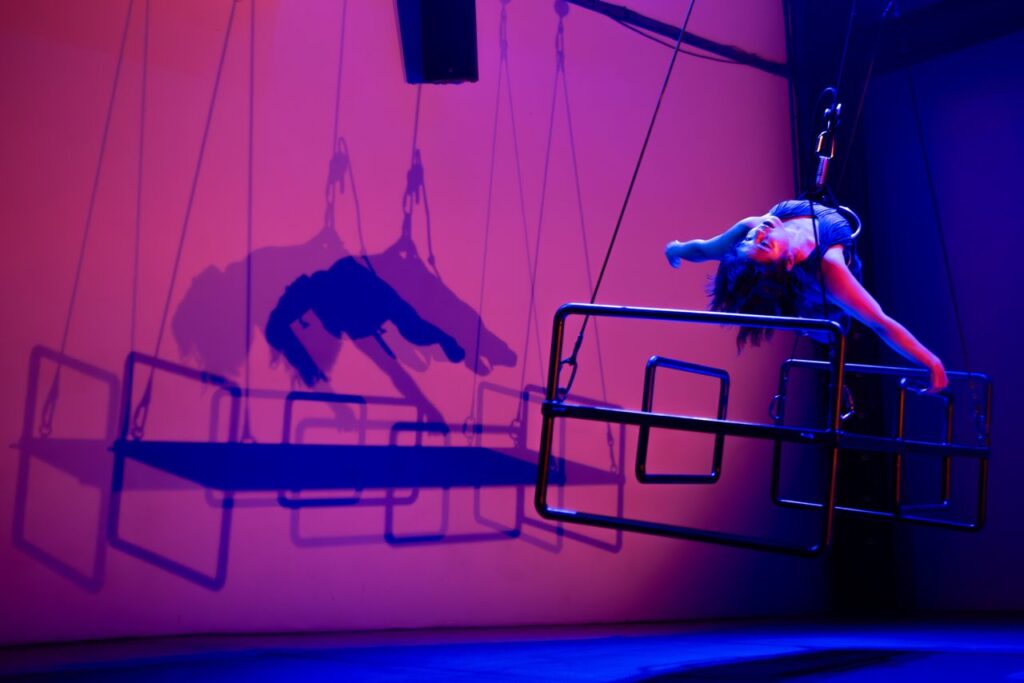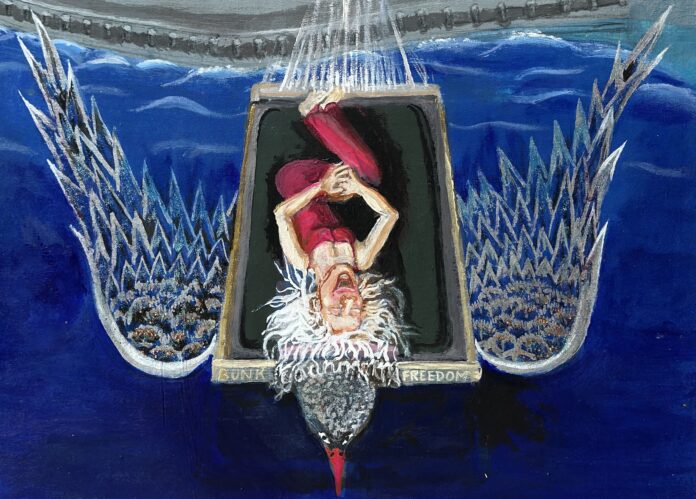This is Drama Masks, a Bay Area performing arts column from a born San Franciscan and longtime theatre artist in an N95 mask. I talk venue safety and dramatic substance, or the lack thereof.
As we in the Bay watch for flood warnings due to atmospheric river storms, our friends and family in Los Angeles are just now beginning to see clear skies after a month of terrifying wildfires. Climate change and bureaucratic shortcomings–both of which are likely to get worse–have made these sorts of blazes so common that major insurers flat out refuse to do business in California anymore. But although we can expect further disasters, what we didn’t expect was who would the heroes would be.
Amid all the mainstream hoopla about famous filming locations going up in smoke, there were very few mentions about how under-staffed fire crews were crucially assisted by convicted inmates. By coincidence, KQED Live recently hosted a podcast interview with five incarcerated women who are trained to fight fires as they serve their sentences. They save lives with almost no recognition because the law considers them indentured servants for being convicts. American cruelty is unique.

Not only had the topic of that podcast been selected long in advance of the LA fires, but so too had the curators of Yerba Buena Center for the Arts chosen their programming before the US prison industrial complex once again became a topic of wider discussion. In that sense, their selection of the exhibit The Only Door I Can Open (through June 22) and the dance piece If I Give You My Sorrows, which ran from January 31–February 2, almost feels precognitive. In reality, it’s another result of a fixable societal issue that has yet to be addressed.
Co-curated by Tomiekia Johnson and Chantell-Jeannette Black, inmates at Central California Women’s Facility, the two projects are a cry for help. They both represent how the women involved haven’t had their spirits broken after years of isolation. But a recurring motif of liberation and exodus hits home. Indeed, a poster-sized acrylic-on-canvas piece call Blissful Bunk Freedom (2024) by Joanna Nixon depicts said bunk flying out its cell on angelic wings. If that weren’t enough, Cedar Annenkova’s Flight to Freedom (acrylic, 2025) shows similar imagery–complete with the wings–on a wall-sized canvas.
Most of the art hangs on the walls of the YBCA gallery on the second floor. That part of the room is separated by solid white tape as an unofficial border which inmates aren’t meant to cross. Inside the border (which patrons can explore) is a recreation of a sleeping area for inmates. Lars von Trier-style floor outlines illustrate where items like the toilet, shower, and additional beds would be. Cinder blocks representing the wall indicate very little privacy. The bunk bed represented is decorated with open magazines and law books. Nearby is a locker in which feminine hygiene products are stuffed alongside chemical cleaners.

Three aspects stand out: 1) The dispiriting facts about women in prison places on placards around the exhibit; 2) the aforementioned lack of privacy (illustrated clearest by the multiple CCTV cameras pointed directly at the inmates’ art table; and 3) the lack of space in which to move. Even after a few minutes, one is happy to get out of the area, which feels like a glorified hamster cage. The only real positive about walking through the exhibit is that before it was filled, CO² levels on my Aranet4 peaked around 536ppm.
Part of the opening night event featured a call from Tomiekia Johnson. As she tried to find the words to explain her curation, her words were frequently interrupted by an automated voice saying that there were only so many minutes left available for the call. She isn’t even allowed to see the very project she put together, which somehow makes it more powerful.
THE ONLY DOOR I CAN OPEN runs through June 22 at YBCA, SF. Tickets and further info here.
Johnson’s voice was also crucial to the performance element. For only the first weekend of the exhibit, YBCA hosted the high-flying talents of Flyaway Productions, as they personified. The love/hate relationship inmates have with their bunks. Those familiar with Flyaway’s work know they frequently employ a swinging device that resembles a bed. The figurative becomes literal for If I Give You My Sorrows, the dance piece they created to accompany the above exhibit.
Over the course of about an hour, the dancers (accompanied by a haunting musical score) performed routines narrated by inmate-written poems, including from Johnson. All was based around the uncomfortable beds on which the inmates are forced to sleep. The inmates noted the contradiction of jumping on their beds as children and wishing they could jump away from the beds they now have. (Again, returning to the winged motif.) They lamented how time passes so slowly that it seems to stop. They found themselves developing levels of Stockholm syndrome with the uncomfortable cots to which they seem tethered by invisible ropes.
Of course, this was a Flyaway show, so there are literal ropes, too. The dancers aren’t specified in the program we were given opening night, but the troupe’s acrobatic routines were on full display. They often got so close to the swinging cots that one was afraid of risking injury by proximity. Fortunately, the dancers made it look easy as they seem to defy gravity, even when they aren’t wearing harnesses.

The setting also plays a role, as the YBCA Forum in which the performance took place bore a more-than-passing-resemblance to a prison auditorium. There were even catwalks above, which the dancers used for a number of routines that took the spectacle and danger to literal heights, as they are wont to do. One had to wonder if the YBCA was chosen for that specific reason or was it, like the scheduling, simply another frightening coincidence?
One thing in favor of the spacious Forum was the fact that airflow was frequent enough to where CO² levels on my Aranet4 peaked around 524ppm during the hourlong show.
The only thing really going against the show was that it began to drag during its final 15 minutes. It’s hard to say what exactly changed, but there was a definite downward shift in energy that almost felt as is they were stretching time to fill the hour. The impact of the inmates’ words never wavered, nor did the dancers seem to miss a step. Yet, the flow of the performance didn’t seem to hold for the entire hour.
“Freedom” is a word thrown around a lot by the current administration. Paradoxically, it often uses it in service of a lack thereof; “Freedom for me, but not for thee.” The US has so little regard for human autonomy that incarceration is still a legal form of slavery that has gone unchallenged on the federal level since its inception. Just like the military, the prison industrial complex turns people from citizens to interchangeable numbers on a spreadsheet.
Even if you don’t learn anything new from the aforementioned exhibit and dance piece (the latter of which will be shown on video in segments alongside the exhibit), it’s worth experiencing the former to be reminded of how creative minds flourish under literal confinement. It was worth experiencing the latter to see their dreams of flight take tangible shape—even if just for an hour.





